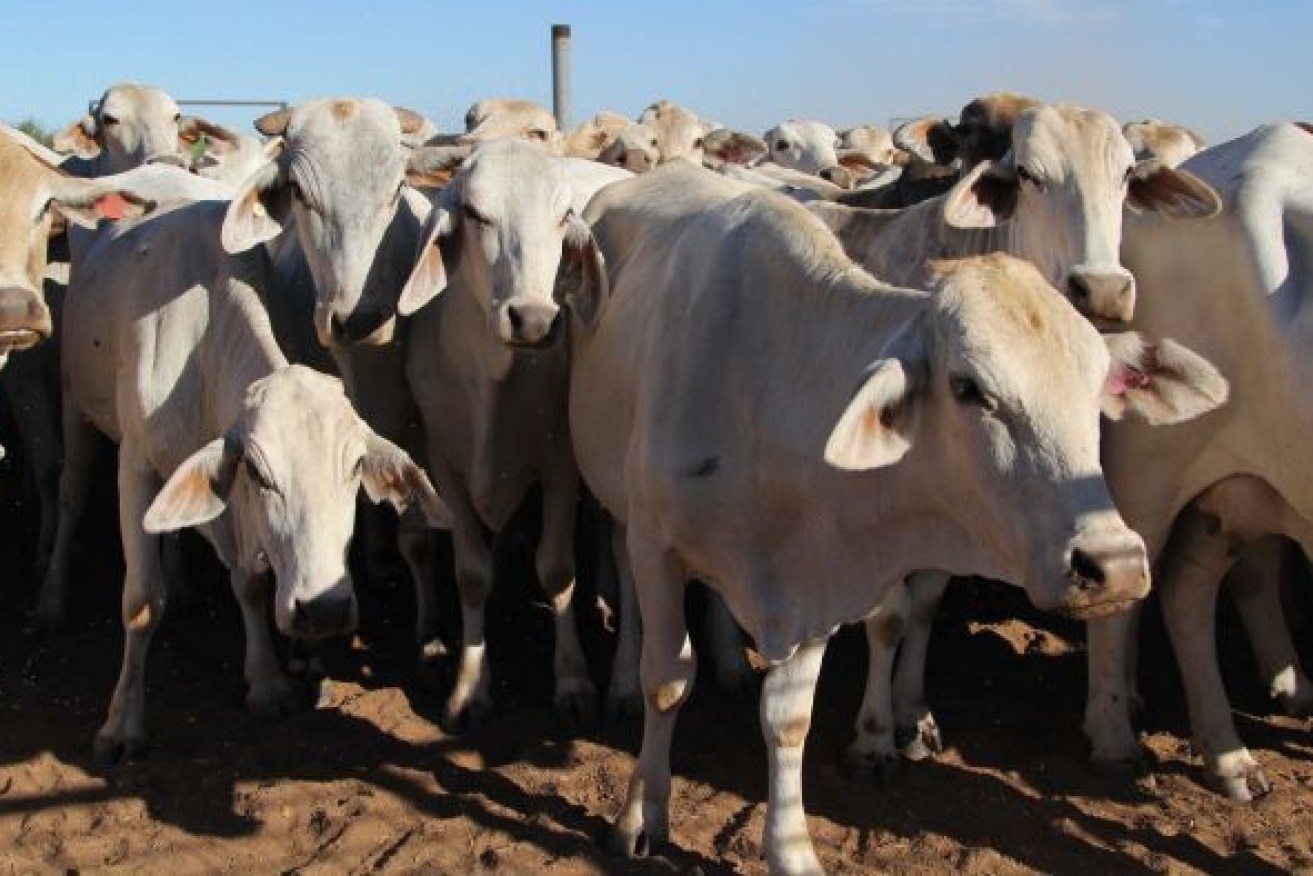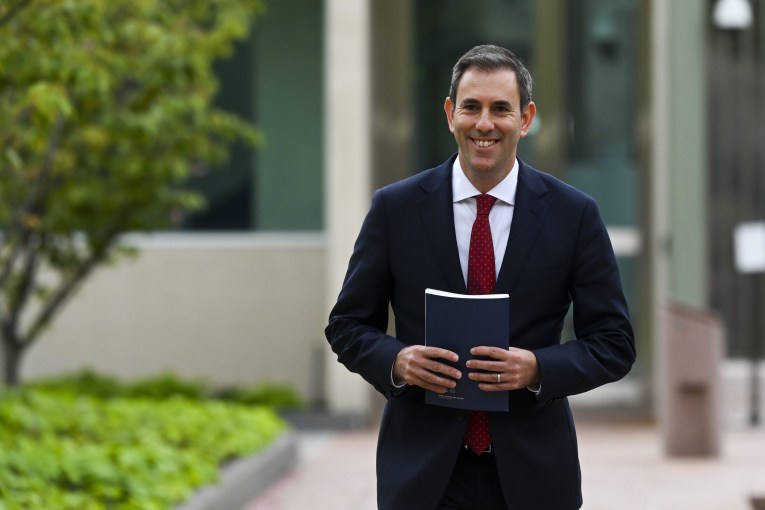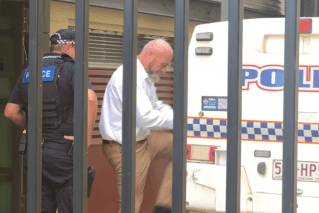Why China’s trade tantrum hasn’t taken all the sizzle out of our beef exports
China’s beef trade ban will cause some short-term pain but shouldn’t deter our red meat suppliers from making a killing in other export markets still largely untapped, writes Brad Cooper


Not even the COVID-19 pandemic is expected to stifle buyer confidence in a what experts are tipping will be a bull market for cattle sales in Queensland. (Photo: ABC)
It used to be a wry observation within business circles that regardless of the question the answer was always China.
Such was the voracious appetite for Australian products and services – from minerals, raw building materials, fibre and food – it was the only logical conclusion to be made from a supercharged trade relationship on steroids, generating numbers that would relentlessly surge to stratospheric heights for more than a decade.
Every industry that does business with China will have their eye-popping story, but Australia’s beef industry can tell the tale of a relationship that took exports from virtually nothing in 2009 to more than 300,000 tonnes last year.
Driven higher by China’s need for more animal protein to fill the gap left absent by their decimated pig herds at the hands of African swine fever, the demand catapulted China into our number one beef export market, ahead of Japan, the US and South Korea.
Beef exporters went into 2020 expecting it to be another bumper year for beef exports.
Even the early ravages of Covid-19, causing demand from China’s foodservice sector to plummet and straining international supply chains, failed to make a serious dent on the export figures.
 According to Department of Agriculture, Water and Environment (DAWE) data, exports to China have been on track year to date, recording 79,874 tonnes at the end of April.
According to Department of Agriculture, Water and Environment (DAWE) data, exports to China have been on track year to date, recording 79,874 tonnes at the end of April.
Exports to Japan and South Korea were also ahead of trend at the end of last month. The US with its faltering economy and disrupted customer base has been a different story, with exports there dropping about 34 per cent on the average April trade.
Only a seemingly snap decision last week by the ruling Chinese government to suspend exports from four Australian processing plants could put the skids under beef exports far more effectively than a global human health crisis that’s been raging for months.
Queensland under fire
Queensland beef interests have been hit hardest by the decision, with three of those plants in Queensland and one in northern NSW – all responsible for filling a large portion of China’s high-end demand, restaurant-quality cuts from grain-fed cattle.
Chinese authorities blamed the suspension on a “technical issue”, suggesting products from the four plants were carrying labels inconsistent with agreed import protocols.
The timing of the suspension is curious – coming in the wake of the Morrison Government’s push to have China investigated over its early handling of the coronavirus outbreak in Wuhan.
Industry nerves will be further frayed after China’s overnight decision to impose 80 per cent import tariffs on Australian barley exports, effectively pricing the commodity out of the market and halting the trade.
While conclusions are being drawn that Australia is in the first stage of a Chinese retaliatory strike through its trade relationships, it’s not the first time China has taken aim at our beef industry.
In 2017, China suspended trade from six processing plants, which took four months to resolve, although as livestock market analyst Matt Dalgliesh, from the Mecardo reporting service, concedes the political environment was not as febrile and export volumes were lower.
“During this time monthly beef export volumes didn’t soften by much, although monthly trade levels were much lower than now – at around 8000 tonne,” he said.
The pain this time is expected to be felt much harder, particularly in Queensland and all the way through the supply chain to the farm gate.
Queensland Premier Annastacia Palaszczuk has warned thousands of jobs are at risk, while Chamber of Commerce and Industry Queensland senior policy adviser Gus Mandigora said the trade tensions could not have come at a worse time.
Rabobank animal proteins analyst Angus Gidley-Baird agreed there would be challenges for those beef businesses caught up in the suspensions, given they are geared to supplying premium high-value products that take longer to prepare.
“This will make it quite difficult for them to find an alternative market,” he said.
“If you’re going to be putting in the time and investment into growing a high-quality product then you want to make sure they’re landing on restaurant tables where people are prepared to pay top dollar for them.”
Export success
One of the factors that buffers the Australian beef industry from trade shocks is its diversified export market.
As Meat & Livestock Australia managing director Jason Strong has emphasized in recent days, no overseas market captures more than 25 per cent of Australia’s beef inventory – although China comes close at 24 per cent followed by Japan at 23per cent, US 20 per cent and South Korea 13 per cent.
The remainder is divided between smaller markets in regions such as South-East Asia, North Africa and the Middle East.
Gidley-Baird said the explosive growth witnessed in China in recent years, tended to take the popular attention off Australia’s more mature markets, which were still substantial and stable despite the expected coronavirus contraction in demand.
“There’s certainly some future in exploring further markets in South-East Asia,” he said.
“It’s unlikely we will see anything like the trade growth we’ve experienced with China but as incomes grow in South East Asia region and restaurants continue to westernise we will see the potential for more markets for grain-fed beef open up.”
Opening new markets and developing those with potential is no overnight fix. It takes years of concerted effort and investment by government and private enterprise to open doors and establish networks of trust and reliability.
In an era of limited international air travel and no handshakes, that task just got a little more challenging.
Simone Tully, who heads Australian Organic Meats, a Queensland company that sources organic beef for export to the US and other markets from several cattle producers, says China is a challenging environment at the best of times.
“I’ve been to China quite a few times. They are wonderful people and there’s certainly plenty of opportunity, but when we drilled down into the complexity of the relationships needed to sustain our business, well, that’s when it became a much trickier proposition,” Tully said.
“We know they have a huge demand for clean, safe and high-quality beef, but the element of risk is just too high.”
Dalene Wray, managing director of Queensland pastoral company OBE Organic Beef, said the groundswell of government and industry action to open up China as a key beef export market may have, in fact, been too successful at the expense of other opportunities.
“The incredible growth in Australian agricultural exports to China has been achieved through a very deliberate and concerted strategy led by the Federal Government and backed to the hilt by industry over the last 30 years and it’s been hugely successful in terms of opening a high value, high volume market,” she said.
“But we shouldn’t ever look at export market access and opportunity through rose-coloured glasses. All export markets carry both reward and risk and we must be prepared to manage our businesses very carefully when the risks materialise into problems.”
Wray cites as an example the Federal Government’s 2017 Foreign Policy White Paper.
“It had an extreme focus on Asia, which included China and the Pacific and missed the chance to carefully articulate opportunities in other parts of the world,” Wray said.
“I feel that the document could have benefited from a broader focus.
“The Federal Government is making some headway with India, which is good to see but we need a similar focus on Africa, Middle East, Latin America, including Mexico, as well as the EU.”
Wray also argues that Australian food suppliers should be pushing towards Halal certification if they are seeking a competitive edge in the global market, which would give them the potential to reach an estimated market of 1.8 billion Muslim consumers.
Wray may yet get her wish, with Trade Minister Simon Birmingham due to address the Australia Arab Chamber of Commerce and Industry this week.









